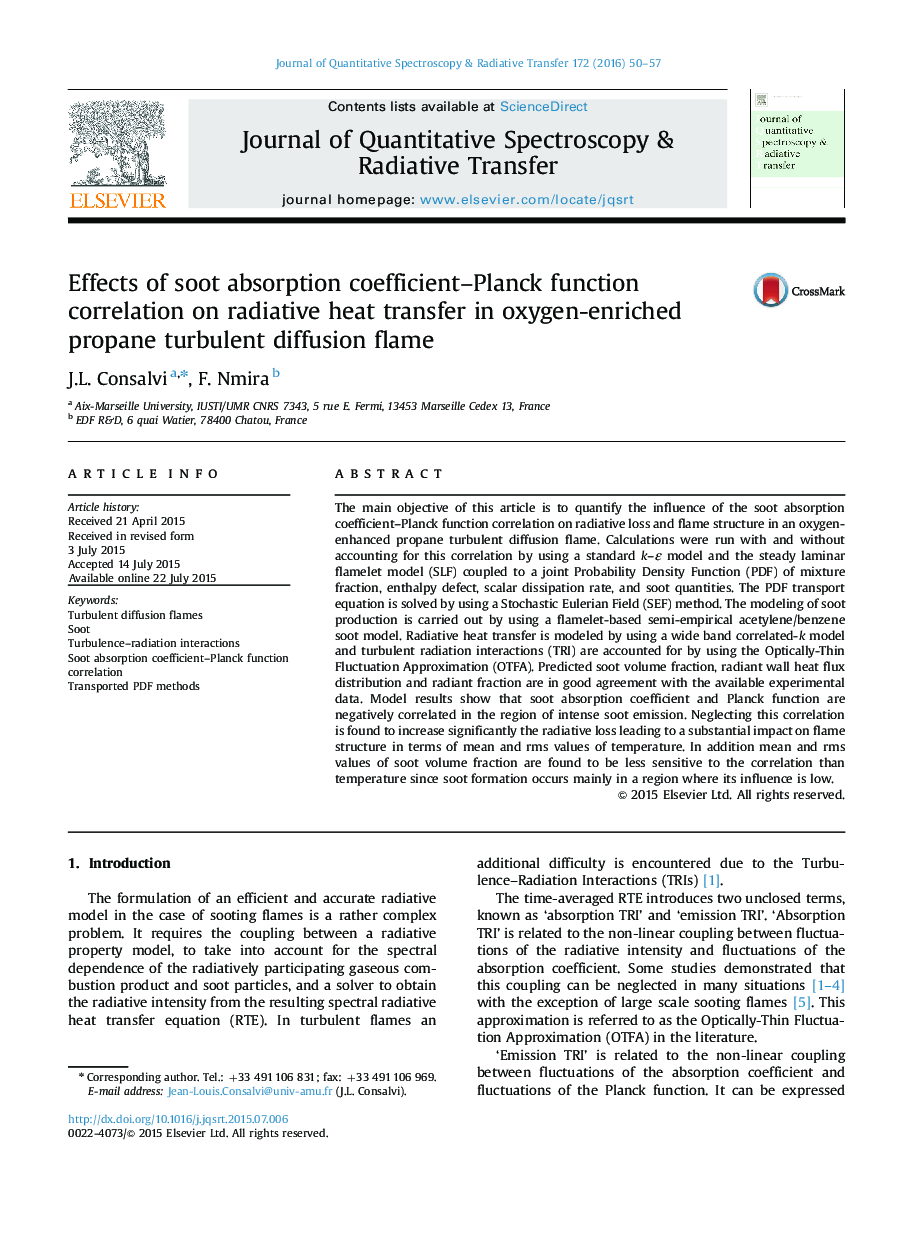| کد مقاله | کد نشریه | سال انتشار | مقاله انگلیسی | نسخه تمام متن |
|---|---|---|---|---|
| 5427760 | 1508643 | 2016 | 8 صفحه PDF | دانلود رایگان |

- Effect of soot absorption coefficient-Planck function correlation has been studied.
- An oxygen-enhanced propane jet diffusion flame has been considered.
- Soot absorption coefficient and Planck function are negatively correlated.
- Neglecting this correlation is found to affect radiative heat transfer and flame structure.
The main objective of this article is to quantify the influence of the soot absorption coefficient-Planck function correlation on radiative loss and flame structure in an oxygen-enhanced propane turbulent diffusion flame. Calculations were run with and without accounting for this correlation by using a standard k-ε model and the steady laminar flamelet model (SLF) coupled to a joint Probability Density Function (PDF) of mixture fraction, enthalpy defect, scalar dissipation rate, and soot quantities. The PDF transport equation is solved by using a Stochastic Eulerian Field (SEF) method. The modeling of soot production is carried out by using a flamelet-based semi-empirical acetylene/benzene soot model. Radiative heat transfer is modeled by using a wide band correlated-k model and turbulent radiation interactions (TRI) are accounted for by using the Optically-Thin Fluctuation Approximation (OTFA). Predicted soot volume fraction, radiant wall heat flux distribution and radiant fraction are in good agreement with the available experimental data. Model results show that soot absorption coefficient and Planck function are negatively correlated in the region of intense soot emission. Neglecting this correlation is found to increase significantly the radiative loss leading to a substantial impact on flame structure in terms of mean and rms values of temperature. In addition mean and rms values of soot volume fraction are found to be less sensitive to the correlation than temperature since soot formation occurs mainly in a region where its influence is low.
Journal: Journal of Quantitative Spectroscopy and Radiative Transfer - Volume 172, March 2016, Pages 50-57